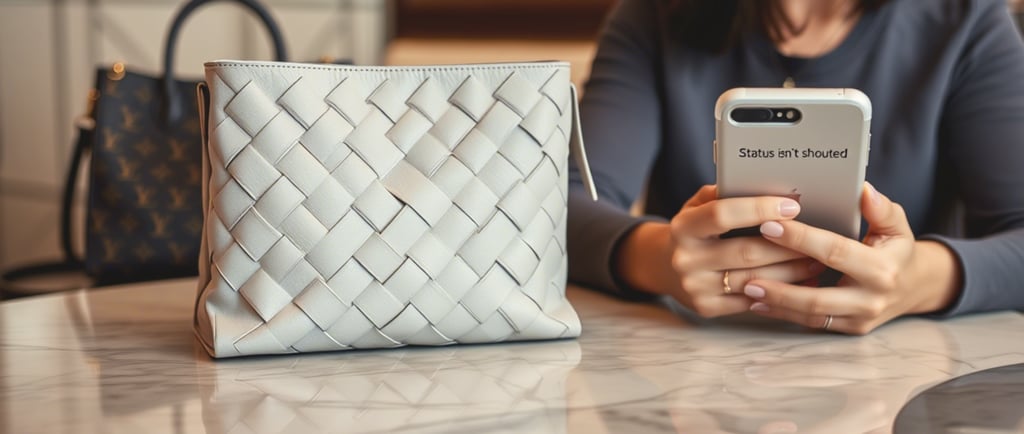The Paradox of Prestige: How Luxury Brands Are Rewriting the Rules for Gen Z
7/21/20252 min read


A New Era of Inconspicuous Consumption
In a world where Gen Z scorns logos but spends $30B+ annually on luxury, a quiet revolution brews. The generation raised on TikTok thrift flips and “less is more” minimalism now dictates terms to an industry built on opulence. Bottega Veneta’s logo-free leather goods soar by 23% year-over-year, while Telfar’s “Bushwick Birkin” becomes a symbol of luxury. The message is clear: Gen Z craves status without the spectacle.
The Shift from Bling to Stealth Wealth
Data paints the divide: 67% of Gen Z prioritize “quiet luxury” over branded flamboyance, according to McKinsey. Bottega Veneta, under Daniel Lee’s vision, erased logos entirely, betting on artisanal craftsmanship and muted tones. The result? A 40% sales jump in 2023. This isn’t austerity—it’s a new aristocracy of taste, where a $5,000 intrecciato tote whispers pedigree without shouting wealth.
Resale Culture: The Anti-Luxury Luxury
Gen Z’s love for resale platforms (The RealReal, Vestiaire Collective) isn’t just frugality—it’s a rebellion. Luxury’s linear economy collides with circular values: 45% of young shoppers now buy secondhand high-end goods. Telfar, a brand born from accessibility, leans in. Its “Buy Less, Buy Better” mantra and community-driven drops (97% sellouts within hours) prove luxury can be inclusive yet aspirational. A Telfar bag isn’t a purchase; it’s a badge of belonging.
Sustainability as a Status Symbol
For Gen Z, ethics aren’t optional—they’re the ultimate flex. Stella McCartney’s vegan leather and Ganni’s carbon-neutral collections tap into this psyche. Brands that transparently align with climate action see 30% higher engagement among young consumers. Sustainability isn’t a footnote; it’s the headline.
The New Storytelling: Values Over Vanity
Gen Z dismisses traditional luxury ads. Instead, they’re drawn to narratives that mirror their ethos. Aime Leon Dore’s nostalgia-tinged collaborations or Paloma Wool’s gender-fluid, art-driven campaigns generate 5x more social traction than polished editorials. Authenticity wins—whether through Telfar’s “as seen on your cousin” aesthetic or Bottega’s cinematic, dialogue-free campaigns.
The Future: A Balancing Act
Luxury’s challenge? Marry exclusivity with inclusivity, heritage with disruption. Emerging tactics include NFT-powered resale certificates (ensuring authenticity in secondary markets) and micro-influencer partnerships (70% trust rate vs. celebrities). The brands that thrive will speak Gen Z’s language: purpose, access, and quiet power.
In Closing: The New Definition of “Luxury”
Gen Z redefines opulence not by price tags or logos, but by principles. The winners? Those who transform luxury from a product into a philosophy—a blend of craftsmanship, responsibility, and cultural resonance.
